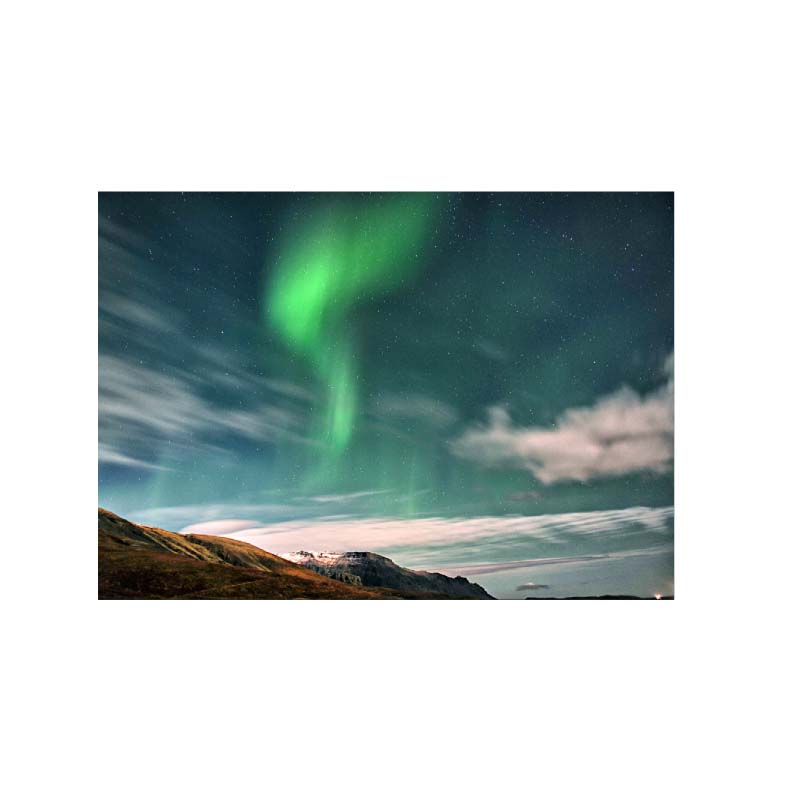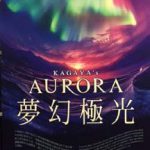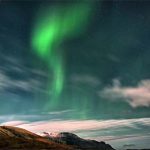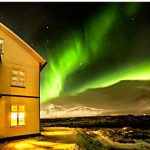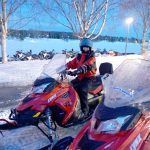I have always been fascinated by what lies above us in the heavenly skies. In my teens, I would browse through pictures on different encyclopedia and books featuring our galaxies and the different constellations.
Although the heavenly bodies above seem stationary, we know that the earth is constantly moving. All we can see are the sun, clouds, lightning, rain, snow, little twinkling stars and the moon.
It was not until recently, through the advances of technology, that we are able to explain the celestial phenomena happening high above the skies, and one fascinating phenomenon is called the Aurora.
While it has, for a long time, caught my imagination, it was not until recently that I finally got the chance to personally experience the Aurora phenomenon.
Last March, I traveled to Rovaniemi, Finland with my wife, three of my high school batch mates and 11 other tour mates, ranging from ages 25 to 80, to witness and experience the magical and majestic dazzling display of the Northern Lights.
Rovaniemi City is situated about six kilometers south of the Arctic Circle. The Finnish Lapland attracts the most number of Aurora Borealis displays, as high as 200 a year.
Our first and second attempts to watch the Northern Lights were unsuccessful due to cloudy conditions. On the first try, the group started out at 9:30 p.m., the bus traversing along very dark roads for about one and a half hours to a remote area far away from the city lights of Reykjavik, Iceland. Arriving at our destination, we were informed that the Northern Lights wouldn’t be visible. With most of my tour mates asleep in the bus, we returned to our hotel at around 12:30 a.m.
During our second try, ever mindful of the icy and slippery ground, we started walking at 9 p.m. for about 30 minutes, and then waited for around 20 minutes in the extreme cold on a dark open field beside a frozen, icy river. Again, due to cloudy conditions, the group walked back to our hotel exhausted and sorely disappointed.
But the third time is always the charm.
Spectacular show
We drove snowmobiles for 25 minutes along a frozen river just to escape the city lights of Rovaniemi and stopped at a totally dark, quiet and secluded resting area. We were tired and weary from the bumpy snowmobile ride in the freezing environment. We removed our helmets but kept the heavy winter suit provided by the snowmobile company on. We went inside a teepee and enjoyed the warmth of the bonfire, had some hot tea and grilled hotdogs to re-energize ourselves.
Within 30 minutes, the most sought after Aurora suddenly appeared in the night sky from the north. We all ran outside. Slowly, the night sky filled with a huge display of painted waves, swirling, curling and shooting rays of green, yellow and white dancing lights. At first, it was a faint moving light, slowly intensifying until it became an ever-changing glow. We watched entranced, as the lights curved and curled, slithered and flickered across the sky.
Most of my tour mates had a sudden burst of adrenalin and started shouting, jumping, rejoicing and dancing to the rhythm of the Northern Lights. This spectacular performance lasted almost 25 minutes. I was completely awed in the presence of the Supreme Being’s power through this unique celestial display.
Kagaya’s Aurora
My comprehension and appreciation of the Aurora phenomenon was enhanced even more after watching “Kagaya’s Aurora” at the Hong Kong Space Museum recently.
“Kagaya’s Aurora” is not intended to replace the actual experience of witnessing Aurora. Rather, it enhances the appreciation level once you meet Aurora.
I came across an article in Tulay’s May 9-22, 2017 issue about an Aurora documentary being featured at the Hong Kong Space Museum’s Stanley Ho Space Theatre until Oct. 30, 2017. Since I was going to Hong Kong in mid-May, I immediately thought this second chance to experience one of Mother Nature’s most amazing performances is something I should not miss.
I went to their website (https://ticket.urbtix.hk/internet/venueDetail/380) and bought tickets at HK$32 per person plus HK$8 per person service charge for online purchase. For those who are interested, Mondays and Thursdays, 7:20 p.m. shows are in English.
I took the Mass Transit Railway, exited the Tsim Sha Tsui station in Kowloon and walked the short distance to the Hong Kong Space Museum.
I was not disappointed by the well-structured and informative show. There was a step-by-step explanation of how Aurora phenomenon occurs, the different forms and colors, and spectacular examples of Auroras in different areas.
The show started with an explanation about the weaker magnetic fields of the Northern and Southern poles, which allow charged particles to enter and collide with our atmospheric gases, thereby producing the different colors and patterns of lights called the Aurora.
The show primarily featured Iceland where one can have a glimpse of these dancing lights. It explained how Iceland was formed and showed Iceland’s different landforms – mountains, glaciers, waterfalls and many volcanic activities beneath the Earth where geysers and hot springs abound.
Because of its proximity to the Arctic Circle, the midnight sun can be experienced off the north coast during summer. This is why the Aurora can only be viewed during the long dark nights of winter and spring, even though the Aurora is a whole year phenomenon.
The documentary also featured the cultures and ancient beliefs of the people in relation to the appearance of the Aurora.
The Stanley Ho Space Theatre, with its huge dome and big screen above, is an ideal setting to view and feel the actual conditions of the remote wilderness and landscapes of Iceland.
The Aurora lights projected on the big dome are realistically close to the real environment that the excitement and delight of viewers are almost palpable – minus the punishing freezing temperature.
Kagaya’s Aurora not only conveys the beauty of one of Nature’s most breathtaking and spectacular displays, but also provides us a moment to contemplate how truly marvelous and magnificent our universe is. Watching Kagaya’s Aurora does not come close to real life experience of chasing the Northern Lights but it will certainly give a depth and context to understanding the phenomenon.
